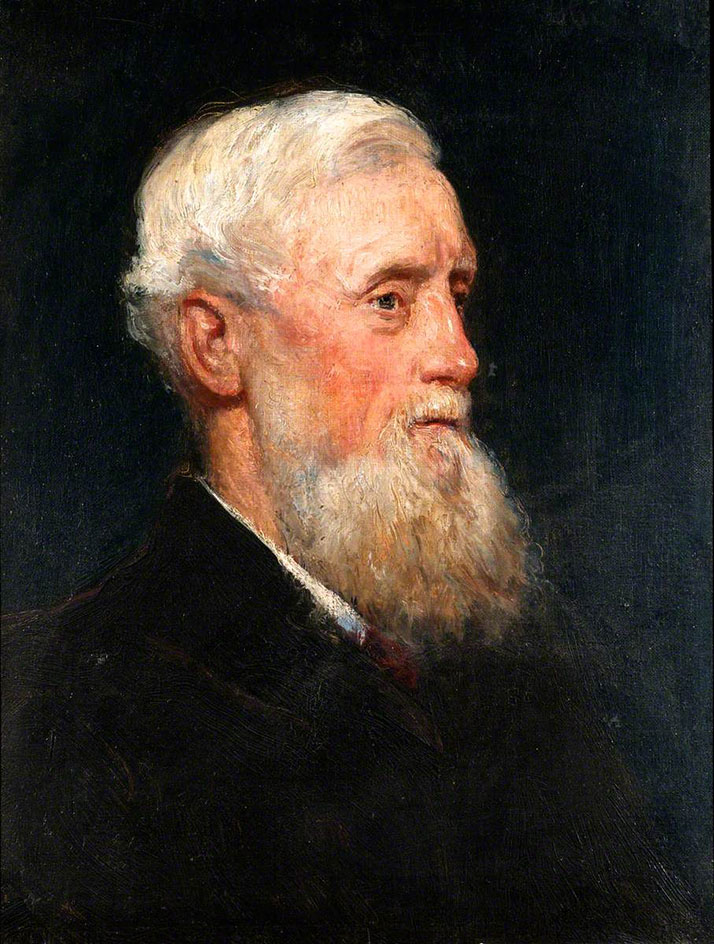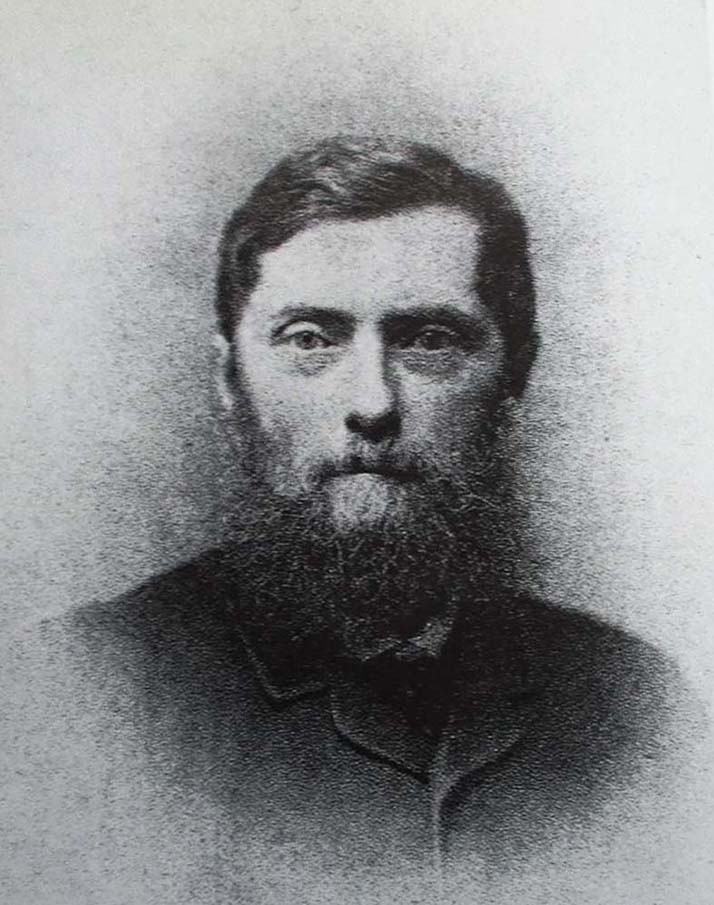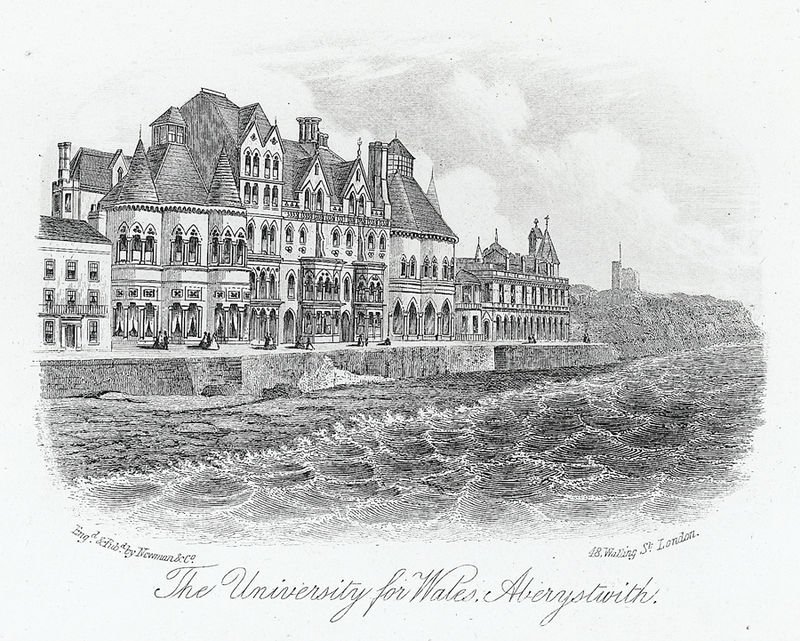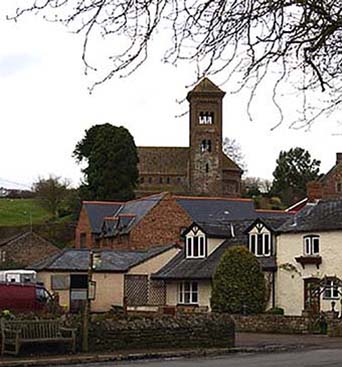
The decorative scheme which has been restored in the church was designed by John Pollard Seddon, an architect who was closely linked with some of the leading figures of Victorian Medievalism, in Gothic Revival Architecture and Pre-Raphaelite Art.
John Pollard Seddon (1827-1906), by Hans Olaf Heyerdahl (1857-1913) given to Aberystwyth University School of Art Museum and Galleries by Seddon's grandson, is reproduced by kind permission of the School.
Seddon was born in London 19th September 1827. His father, Thomas, was a prosperous furniture-maker and upholsterer. Thomas's mother was Mary, née Pollard, the origin of his son's second forename. Thomas had married Frances Nelson Thomas, the 'Nelson' in her name illustrating the admiral's popularity at the time of her birth in 1801. John Pollard's great grandfather, George Seddon, had moved from Lancashire to found the largest cabinet-making business in London, employing 400 journeymenin in the late 18th century.
Seddon was educated at Bedford School, which he entered in February 1841. Between 1848 and 1851 he was articled to Thomas Leverton Donaldson (1795 - 1885), one of the founders of architectural education. Donaldson's classicism was at this time being rejected by young architects like Seddon, in favour of the Gothic Revival.
In the 1851 census he was recorded as an architect, aged 23, living in the family home at 27 Grove Terrace, Kentish Town, with his parents and his older brother, Thomas, an 'artist painter'. Thomas Seddon was a close friend of William Holman Hunt, and achieved his own fame as a landscape painter, with vivid landscapes of Jerusalem, Egypt and Brittany, and achieved his own fame as a landscape painter, with vivid landscapes of Jerusalem, Egypt and Brittany. Both brothers had excellent Pre-Raphaelite credentials. John himself was a lifelong friend of Dante Gabriel Rossetti, they having known each other from early youth, and was instrumental in getting Rossetti the commission for a painting for the reredos of the High Altar of Llandaff Cathedral in 1855 - the 'Rossetti Triptych'.
On 12 May 1864 in Brighouse, Yorkshire, Seddon married Margaret Barber, the third child and eldest daughter of Joseph and Marianne Barber. Joseph was a local solicitor. Margaret's older brother, named Fairless Barber, followed his father into the law and practiced in Yorkshire. Fairless bacame a Fellow of the Society of Antiquaries and Secretary of the Yorkshire Archaeological and Topographical Association, organising local excursions such as one to Beverly in 1875 where St Mary's was being renovated by another stalwart of Gothic Revivalism, George Gilbert Scott. Margaret moved south with her rising new husband. The Seddons took up residence at number 12 Park Street Westminster and raised three children, Maud, Hugh, and Katherine.
Seddon enjoyed a well deserved reputation for his architectural designs and drawings, and is probably best known as the designer of the University College of Wales at Aberystwyth. Apart from his designs of large buildings, his picturesque gothic style was extensively used in building schools, churches and parsonages in Herefordshire and South Wales.
Between 1852 and 1863 Seddon was in partnership with John Prichard. Their major commissions included restoration work at Llandaff Cathedral, the cathedral of the successor diocese to Erging, in which Hentland was originally a parish.

young J P Seddon
Seddon was also a contemporary and friend of The Rev William Poole (1819-1902), vicar of Hentland and Hoarwithy from 1854 to 1901. Poole commissioned him to restore St Dubricius church, which included a rare example of his decoration in the chancel, which was the main subject of the recent restoration project.
Elsewhere in Hentland parish Seddon designed the Parsonage in 1858, the school in 1859, converted an old house into a schoolhouse and master's residence at Hoarwithy in 1868 and rebuilt Hoarwithy church.
St Catherine's church at Hoarwithy was originally a simple chapel of ease to St Dubricius'. The original chapel was built in 1840 by the efforts of the Reverend Thomas Hutchinson, curate in charge of Hentland parish. In 1870 Rev William Poole inherited the family property of Homend, Ledbury and started to beautify the chapel, which he considered 'An ugly brick building with no pretensions to any style of architecture'. Seddon's commission to 'beautify the chapel' resulted, not in a building in his favoured Victorian Gothic style, but in the striking Italian Romanesque church which soars over the village, and which is considered to be the best 19th century church in Herefordshire.
In 1866 Seddon designed the vestry at Hentland church and the lychgate in 1898, when other restoration was carried out at the cost of £600.
In 1859-61 Seddon also rebuilt the church at Llandogo, Monmouthshire. which was itself on the site of a 7th or 8th-century foundation to which St Oudoceus, claimed to be the third Bishop of LLandaff, retired and where he died.

University of Wales, Aberystwyth
Primarily an ecclesiastical architect, he built churches at Chigwell Row, Essex, Great Yarmouth, Ullenhall, Warwickshire, and Ayot St Peter, Hertfordshire. In 1874-5 he built St Andrew's church at Adforton in Herefordshire.

St Catherine's, Hoarwithy
Seddon designed numerous church fittings, including some for Llandaff, and a new pulpit in the choir of Norwich cathedral. Seddon was also responsible for the chancel stalls and Minton floor tiling at St Dubricius church at Whitchurch in Herefordshire.
There were also many pieces of furniture, metalwork, stained glass, tiles and ceramics. His place in the mainstream of contempory design and culture is well-illustrated by the 1887 Rossetti Memorial Fountain in Chelsea Embankment Gardens. The monument was designed by Seddon and has a bronze sculpture of Rossetti by Ford Madox Brown. The monument was unveiled by William Holman Hunt.
He held strong views on architecture, maintaining that Gothic was the only true Christian art, the 'most scientific and beautiful, and most in accordance with common sense'. He wrote a large number of articles, gave frequent lectures, and was known for his wit.
Closely involved in ecclesiatical architecture all his working life, in 1904 Seddon was Diocesan Architect for London.
Seddon was a friend of William Morris and George Gilbert Scott. Other of his friends included such leading lights in the Gothic Revival as William Butterfield, John Loughborough Pearson, Richard Cromwell Carpenter, James Brooks and G. E. Street.
He died 1st February 1906.